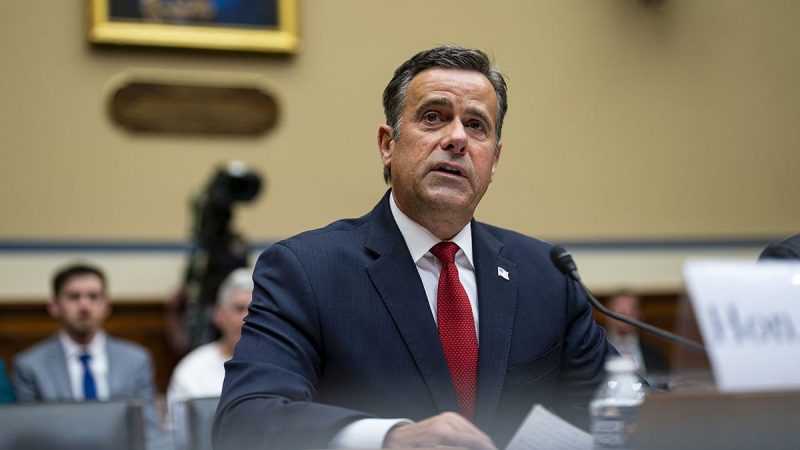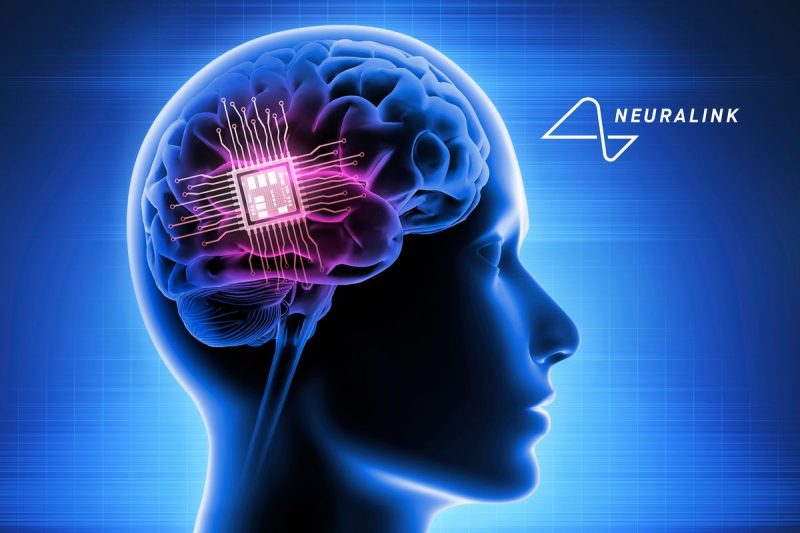
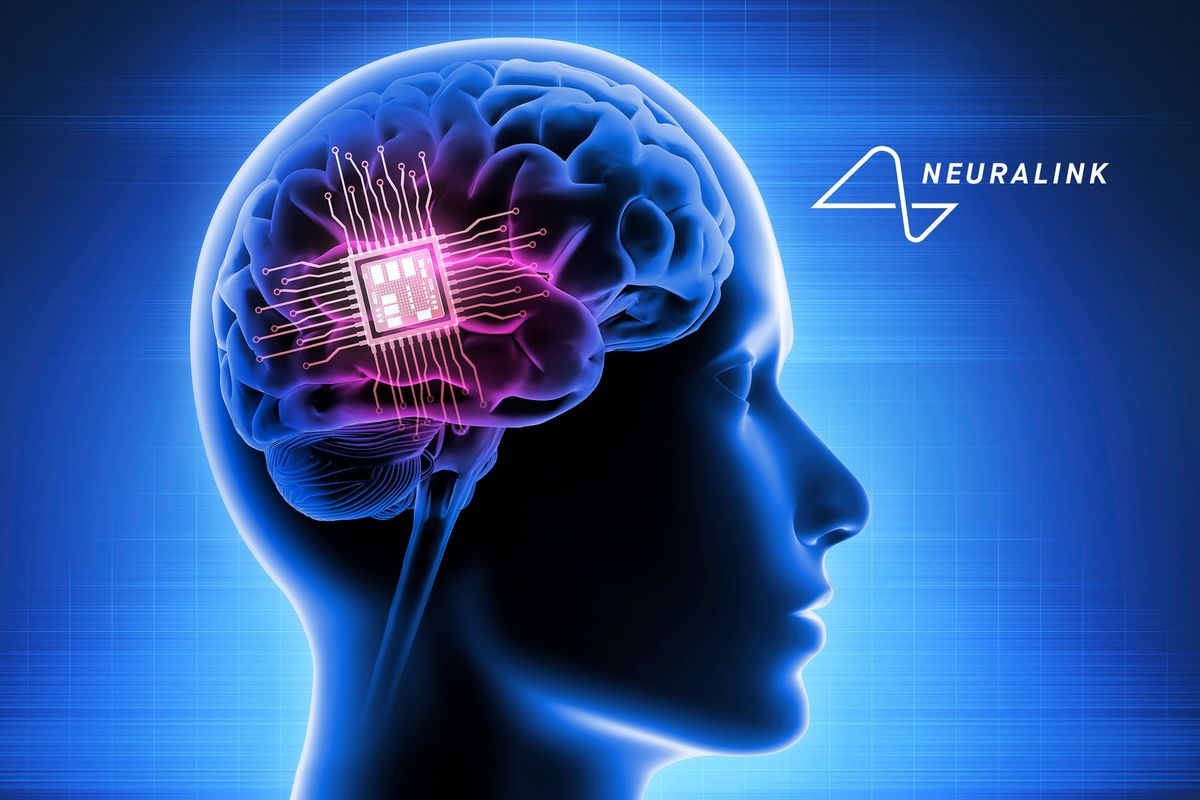
Elon Musk’s Neuralink has captured the public’s attention and imagination with its futuristic vision of connecting the human brain to computers.
A July 2024 report by IDTechEx projects that the overall brain computer interface (BCI) market could reach a market value of over US$1.6 billion by 2045.
‘We anticipate that the market for non-invasive solutions will grow before the commercialization of invasive solutions from players such as Neuralink,’ stated the research firm’s Senior Technology Analyst Dr. Tess Skyrme. ‘However, the long-term opportunity within the assistive technology market is more likely to be captured by the likes of Elon Musk.’
As Neuralink continues to make strides, investors are wondering how to get a piece of the action by investing in the neurotechnology venture.
Because it is privately held, Neuralink stock isn’t accessible to the average person — but that doesn’t mean its impossible to get exposure to this future-looking medical research company. Read on to learn how to participate in the growth of this exciting business.
What is Neuralink?
Neuralink is a neurotechnology startup that was founded in 2016 by Tesla (NASDAQ:TSLA) CEO Musk and a team of eight scientists and engineers in 2016.
It was first reported on in 2017, and two years later, in June 2019, the company held and streamed its public launch event to showcase the technology it is developing: an innovative brain-computer interface.
Instead of using traditional electrodes, which according to a company whitepaper can be bulky and damaging to brain tissue, Neuralink’s BCI uses “ultra-thin threads” that are implanted into the brain using a robotic device that resembles a sewing machine. Once implanted, the electrodes develop a BCI, stimulating the brain and monitoring activity, and the threads connect to a custom-designed chip that can read data from groups of neurons.
Potential uses of BCI technology include helping paralyzed individuals regain control of their limbs and restoring vision. Musk told his audience during Neuralink’s 2019 launch event that this technology could have a wide range of applications in medicine, such as restoring sensory and motor function in people with spinal cord injuries or neurological disorders. Additionally, an early goal of development is translating neuron signals into computer commands, which would allow humans to control devices like computers and smartphones with their brainwaves.
Musk has claimed that BCI could even facilitate direct communication between humans and machines, although some members of the neuroscientific community are skeptical. Other experts have suggested that Neuralink’s work is not necessarily novel — as Dr. Jason Shepherd, an associate professor of neurobiology at the University of Utah, told Business Insider in 2020, “All the technology that he showed has been already developed in some way or form. Essentially what they’ve done is just package it into a nice little form that then sends data wirelessly.”
Other experts in the field have ethical concerns about how Neuralink is conducting its clinical trials and the broader implications of disregarding established standards.
“If you decide to play with fire in a house, you increase the risk threshold not only of yourself but of the whole house,” Marcello Ienca, a professor of ethics of AI and neuroscience at Technical University of Munich, told Forbes. “My fear is that Neuralink’s disregard for the ethical aspects of their technology may cause a backfire effect for the entire neurotechnology community.”
How much is Neuralink worth?
Neuralink was reportedly valued at around US$8 billion in July 2024, but as a privately held business, much of its financial information is kept under wraps. That said, US Securities and Exchange Commission (SEC) documents containing information about its funding rounds provide some insight.
The earliest came in 2017, when the company raised US$27 million out of a planned US$100 million in a Series A funding round. In April 2019, SEC filings show the company acquired US$39 million out of a planned US$51 million in a Series B funding round. A limited amount of information has been made available to the public, and the identities of the investors have not been publicly disclosed. However, some news outlets have speculated that funding could have come from a combination of venture capitalists, or from Musk himself and the Neuralink team.
In 2021, Neuralink received what was then its largest amount of money to date, raising US$205 million in a funding round led by tech investment firm Vy Capital. Other participants included Google Ventures, the venture capital arm of Alphabet (NASDAQ:GOOGL); OpenAI CEO Sam Altman; Fred Ehrsam, co-founder of Paradigm and Coinbase (NASDAQ:COIN); and Ken Howery, co-founder of PayPal (NASDAQ:PYPL) and Founders Fund.
In May 2023, as Neuralink faced public backlash over accusations of animal mistreatment, it received clearance from the US Food and Drug Administration (FDA) to run the first human trial of its brain implant. The company’s latest round of funding, worth US$280 million, came shortly after in August 2023; Reuters reported that it was led by Founders Fund. The filing was amended in November 2023 to reflect an additional US$43 million, bringing the total to US$323 million.
Is Neuralink approved for human trials?
In May 2023, the US Food and Drug Administration granted Neuralink clearance to run the first human trials of its brain implant. Two human clinical trial participants have received the Neuralink implant as of August 2024.
Neuralink opened a patient registry in early 2023 that allowed people who had at least one of a qualifying list of conditions to volunteer for upcoming clinical trials. The first study, dubbed PRIME — Precise Robotically Implanted Brain-Computer Interface — is specifically focused on patients with cervical spinal cord injuries or amyotrophic lateral sclerosis.
Musk said in January 2024 that the brain chip being used for testing is named Telepathy. It is about the size of a coin, and each one is equipped with over 1,000 electrodes 20 times finer than human hair that fan out into the cerebral cortex. The first operation was performed on January 29 of this year. Musk shared the results on X, formerly known as Twitter, stating that the patient was “recovering well” and that “initial results show promising neuron spike detection.”
The next update came during a Spaces event on X on February 19, 2024, during which Musk stated that the patient had recovered and was able to move a computer cursor using thought. However, the lack of third-party validation and limited information shared with the public about the trial has raised concerns about transparency among some researchers. In mid-May, Neuralink’s first patient Noland Arbaugh, who is quadriplegic, shared his experiences in his first 100 days with the Neuralink brainchip.
According to Arbaugh at the time, despite some setbacks, he believed his trial to be a success. One of the largest benefits was that the Link allowed him to operate his computer and other devices lying down, while he needed assistance for set up and repositioning with prior devices. This gives him more freedom to live on his own time, he explained. Additionally, it offers greater control than other devices he has used.
‘The games I can play now are leaps and bounds better than previous ones,’ Arbaugh said. ‘I’m beating my friends in games that as a quadriplegic I should not be beating them in.’
Reuters reported in late May that Neuralink is set to enroll another three patients in its clinical trial. The study has an estimated primary completion date of 2026, and fully completed by 2031.
In early August, Musk shared that Neuralink had implanted a brain chip into its second clinical trial patient, who is paralyzed following a spinal cord injury from a diving accident. In a January 2025 interview, the tech leader said a third patient had also received the Neuralink implant.
Neuralink brain-computer implant clinical trials were approved by Health Canada in November 2024.
How to invest in Neuralink?
With Neuralink continuing to move forward, how can investors get a piece of this up-and-coming technology?
As mentioned, the firm has yet to go public, so purchasing Neuralink stock is not an option for many investors. The vast majority of Neuralink’s funding has come from venture capitalists and a handful of billion-dollar companies.
However, there are still ways for investors to potentially profit from Neuralink’s growth before it goes public. For example, investing in publicly traded companies that have invested in Neuralink can provide an indirect stake. Many of the company’s investors are venture capital firms or private individuals, but some of these firms, such as Google Ventures, are subsidiaries of publicly traded companies. By investing in Alphabet, individuals can indirectly benefit from its investment in Neuralink, as any profit from the investment could potentially flow back to Alphabet.
This indirect approach can be a viable strategy for individuals who want to gain exposure to Neuralink without waiting for the company to go public. Coinbase is another company that offers indirect exposure to Neuralink’s growth; the enterprise is owned by Ehrsam, whose venture capital fund Paradigm has invested in Neuralink.
Those who qualify as accredited investors could also potentially invest in a Neuralink funding round. According to the SEC, an accredited investor must have a net worth of at least US$1 million, not including the value of their primary residence, or an annual income of at least US$200,000 for individuals and US$300,000 for married couples. There must also be a reasonable expectation of the same level of income in the year of filing.
Individuals can also qualify as accredited investors if they are an investment professionals in good standing. In that case, the SEC’s guidelines indicate that they need to hold either a general securities representative license, an investment advisor representative license or a private securities offerings representative license.
Entities like banks, insurance companies or investment firms with total assets of at least US$5 million may also qualify as accredited investors. Certain types of entities, such as private business companies and small business investment companies, may be exempt from the standard asset value requirements for accredited investor status.
It’s also worth noting that Neuralink is just one of several companies currently working on developing BCI technology. According to research by IDTechEx, companies working to develop invasive brain-computer interface solutions have amassed nearly US$1.5 billion in funding.
One competitor is Synchron, a company with similar ambitions that has received funding from the likes of Jeff Bezos and Bill Gates. On February 1, 2024, Synchron acquired a minority stake in German manufacturer Acquandas. This acquisition secures exclusive access to Acquandas’ advanced metal layering technology, which is a critical component for Synchron’s device, the Synchron Switch.
Synchron launched a patient registry in April last year to prepare for an upcoming large-scale brain implant trial required to apply for US Federal Drug Administration (FDA) medial device approval. In July, the company announced one of the patients implanted with the Synchron brain computer interface was able to use his direct thoughts to control the cursor on the Apple Vision Pro.
More recently, this January, Synchron announced a partnership blending NVIDIA’s Holoscan platform with its BCI technology. “Synchron’s vision is to scale neurotechnology to empower humans to connect to the world, and the NVIDIA Holoscan platform provides the ideal foundation,” stated Synchron CEO and Founder Tom Oxley.
Precision Neuroscience is another company working in the brain-computer interface field, although it is also private. Founded by one of Neuralink’s co-founders, the BCI company is currently testing its Layer 7 Cortical Interface, which is a thin, flexible film that sits on a brain’s gray matter instead of being implanted in it, making it less invasive.
Precision Neuroscience recently set a record for the highest number of electrodes used to detect a person’s thoughts at 4,096 when they combined four of their interfaces on one brain. The company completed a fresh funding round of US$93 million in November 2024.
Although the field is nascent, the potential for BCI to impact various industries such as robotics, medicine and biotech has generated a growing amount of interest and excitement. Additionally, heightened interest in the artificial intelligence (AI) sector has led to more research and exploration in related fields, and has attracted increased investment in fields benefiting from AI advancements, including robotics and medicine. AI is also being used as a tool to help discover new insights and make moves that might not have been possible without its use.
Finally, one of the simplest ways to gain exposure to Neuralink would be through an exchange-traded fund (ETF) that invests in companies related to BCI technology. While there isn’t an ETF that exclusively focuses on BCIs, there are funds that offer exposure to related themes. One example is the iShares Healthcare Innovation ETF (LSE:HEAL,OTC Pink:BLKIF). This fund consists of companies that are developing new and innovative healthcare technologies.
Two other options are the Global X Robotics & Artificial Intelligence Thematic ETF (NASDAQ:BOTZ), which includes companies that are involved in the development of robotics and AI, and the ARK Innovation ETF (ARCA:ARKK), which focuses on disruptive technologies across multiple industries, including healthcare and robotics.
As with any investment decision, it’s important to perform due diligence on available options, including comparing ETFs, to ensure they align with one’s investment goals.
Securities Disclosure: I, Melissa Pistilli, hold no direct investment interest in any company mentioned in this article.
This post appeared first on investingnews.com
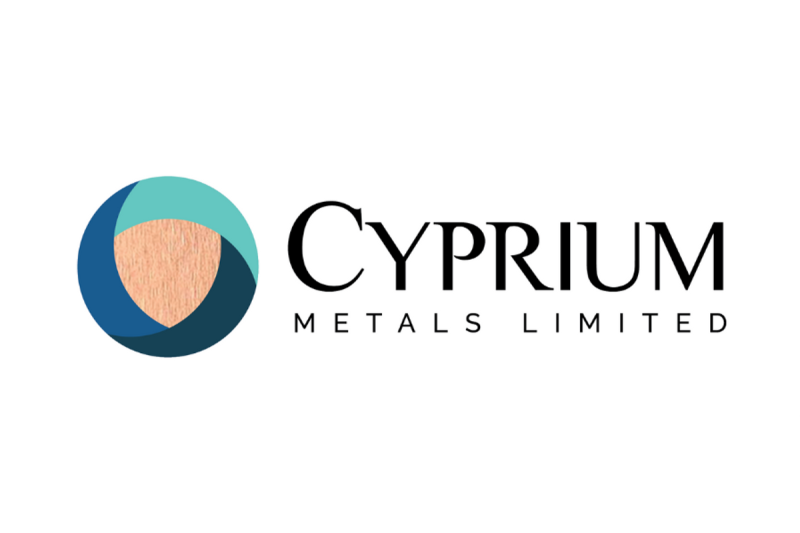
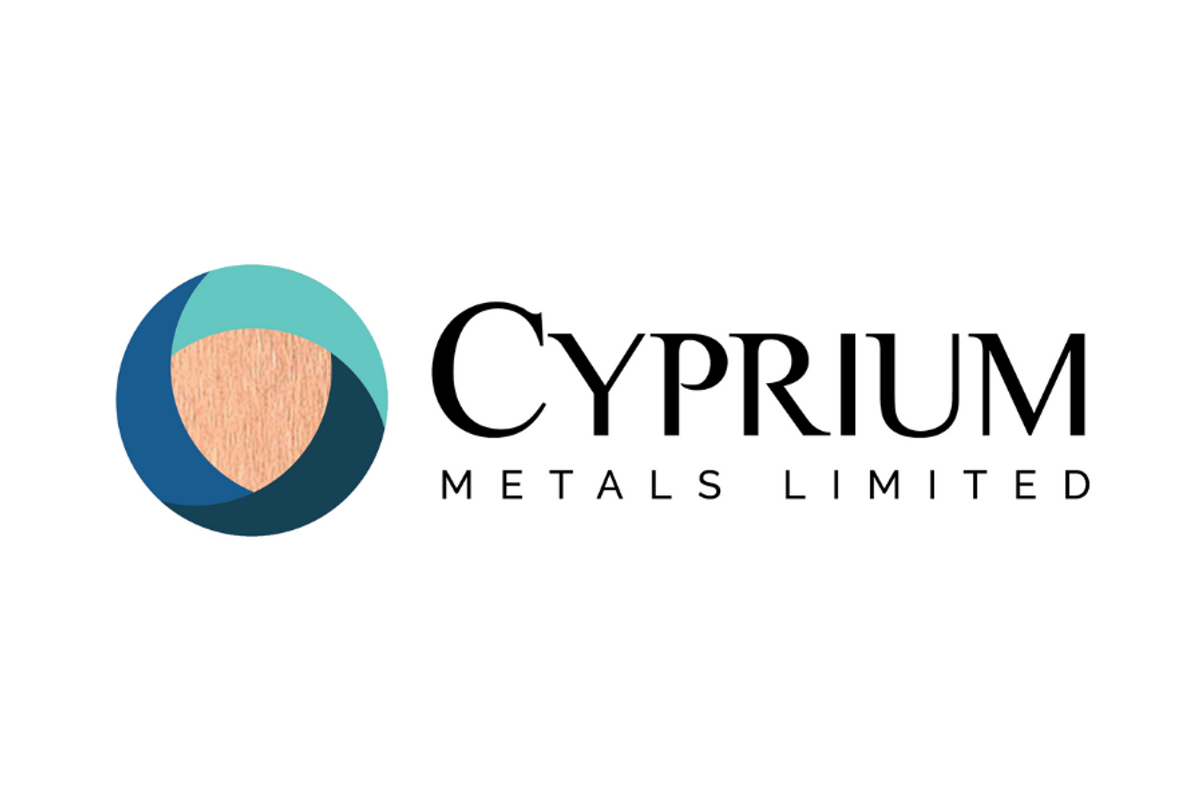









![Trump re-designates Iranian-backed Houthis as terrorists: ‘Threaten[s] security of American civilians’](https://startyourinvesting.com/wp-content/uploads/2025/01/trump-houthis-800x450-OqUz8z-768x432.jpeg)



 Brightstar Resources (BTR:AU) has announced High Grades in Sandstone Drilling, incl 4m @ 59g/t Au
Brightstar Resources (BTR:AU) has announced High Grades in Sandstone Drilling, incl 4m @ 59g/t Au

 BPH Global (BP8:AU) has announced Completion of Indonesian Seaweed Joint Venture Transaction
BPH Global (BP8:AU) has announced Completion of Indonesian Seaweed Joint Venture Transaction

 Condor Energy (CND:AU) has announced A$3M Placement to Advance High-Impact Workplan for Peru
Condor Energy (CND:AU) has announced A$3M Placement to Advance High-Impact Workplan for Peru

 International Graphite (IG6:AU) has announced Financial Agreement signed releasing $2M grant
International Graphite (IG6:AU) has announced Financial Agreement signed releasing $2M grant
